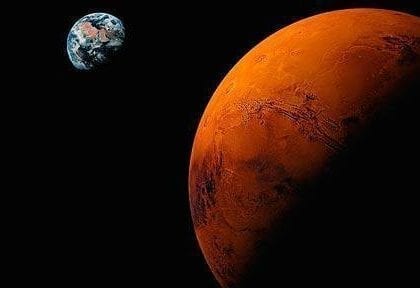
By Dr. Robert Zubrin, National Review, 01.09.20
Fears that water-consuming microbes from the Red Planet would desiccate Earth are absurd.
In a special issue, the last of 2019, the web magazine Quillette deals with the exploration and settlement of Mars. The issue includes contributions from Michael Shermer, Cathy Young, and Michael Solana, all of whom address the question of future governance on the Red Planet. The topic might seem to some to be far-fetched, but it nevertheless provides these able conservative and libertarian writers ample scope to speculate on the always relevant subject of what might be the best principles on which to organize a government anywhere.
So far so good. However, the issue also includes an article – “One Small Step for Man… One Giant Leap toward the Annihilation of All Mankind”, by forensic psychologist Armondo Simon – that, written in earnest, is hands down the most absurd piece ever penned about the purported danger of back contamination from Mars.
According to Simon, humans should not go to Mars because they might return bringing microbes that would consume Earth’s ocean, leaving our home planet bereft of all water.
“So a human steps on Mars and returns to Earth carrying the water-eating bug in the folds of a spacesuit,” he writes. “The virus escapes and water begins to disappear – slowly at first and then rapidly. What can be done? Nothing. One cannot apply a vaccine to the ocean.”
The first thing to note about this doomsday scenario is that it is not original. In fact, the device of water-eating Mars bugs endangering Earth was a central element in the plot of “The Waters of Mars,” a Doctor Who episode from 2009. That, however, was comedy.
Even so, could water-consuming microbes be a possibility? By all means. In fact, we have had them on Earth for over 3 billion years. Among the first to appear were algae, which have prospered here in great numbers ever since, supplemented by wave after wave of additional types of photosynthetic organisms (a.k.a. “plants”) that use the energy of sunlight to break down water and carbon dioxide, thereby producing organic materials.
It is even possible, though by no means certain, that the first photosynthetic organisms did come from Mars, since there is natural transport of material from Mars to Earth, as meteoric impacts on the Red Planet scatter fragments that land here. In fact, we still get about 500 kilograms of Martian rocks landing on Earth every year, with a lot more imports coming in annually back in the solar system’s early days when the impact rate was far greater. Careful examination of these rocks has shown that large portions of their material were never raised above 40 degrees Centigrade during their entire career of ejection from Mars, transit through space, and reentry and landing on Earth. So any microbes contained in such rocks would have survived the trip and arrived on Earth in large numbers long ago.
To read the full article, please click here.


